The Foreign Exchange Matrix: A New Framework for Traders to Understand Currency Movements
$19.08
| Author(s) | , |
|---|---|
| Format |
|
| Pages |
320 |
| Publication Year |
2013 |
The Foreign Exchange Matrix fills an important need in the market today regarding currency valuation and trading. With more than 50 years of foreign exchange market experience between them, Rockefeller and Schmelzer boldly go where few have dared. While they flatly admit to a lack of an elegantly simplistic theory to currency valuation, what they provide is a vigorous and comprehensive examination of the factors that weigh on foreign exchange markets.
Introduction:
The FX market is a mystery to most people, including some of its participants. Pundits on other financial markets and legislators in most countries don’t fully understand it, either. Everyone notes how big the FX market is – bigger than all other global markets combined at $4 trillion per day – but no one ever asks “What is the purpose of all this trading volume?” There are other unanswered questions about FX too.
We also want to know whether FX secretly drives all other markets, or whether it is the passive end-product of all the other markets. Neither assertion is wholly accurate, but knowing that doesn’t help us understand where FX does fit into the grand scheme of things. Further, why do exchange rates always overshoot any reasonable estimate of value, such as comparative purchasing power? Does this mean the FX market is inherently unstable, as financier George Soros has said?
Most of all, FX is money, and money has many different roles. Money is not only how we pay the electric bill (medium of exchange), how we measure economic sustainability (unit of account), and how we measure wealth (store of value), it is also a symbol of a country. Chances are the realities of the FX market are not what you might think. In this book, we point out that:
- FX is driven more by pure speculation and global investment flows than by economic facts and ideas.
- FX players thumb their noses at the efficient market hypothesis and the concept of rational expectations.
- FX has a disconnect puzzle in which factors that should move the market do not, such as the three decades of persistent trade surpluses in Japan and deficits in the US. The exchange rate does not work as an equilibrating factor, as economists insist it should.
- While we cannot forecast exchange rates systematically, we can trade FX systematically.
- FX does not have a benchmark rate of return that traders or investors must try to match and surpass.
- FX traders are vastly more disciplined than traders in other sectors, in part because they use technical analysis.
- We do not have volume statistics in FX, except in the most delayed and roundabout forms.
In summary, the FX market is endlessly fascinating, not least because figuring out some of its puzzles and perversities leads to profound insights into the human heart and mind, albeit sometimes all you get is the same old insight that the profit motive always rules in markets and it doesn’t pay to attribute mystical properties to mere prices.
Contents:
- The Matrix Concept
- Review of Risks
- Global Attitude Toward Risk
- Interest Rates and Interest Rate Differentials
- Forecasting FX
- Positions and Flows
- Intermarket Analysis
- Technical Analysis in Foreign Exchange
- The FX Files of Trading
- Be Careful What You Wish For: Reserve Diversification and the Future of the Dollar
- The Euro and the New Gold Standard
- The Central Bank Tool Kit and How it Affects Foreign Exchange
The Foreign Exchange Matrix: A New Framework for Traders to Understand Currency Movements By Barbara Rockefeller, Vicki Schmelzer pdf
14 reviews for The Foreign Exchange Matrix: A New Framework for Traders to Understand Currency Movements
Clear filtersOnly logged in customers who have purchased this product may leave a review.

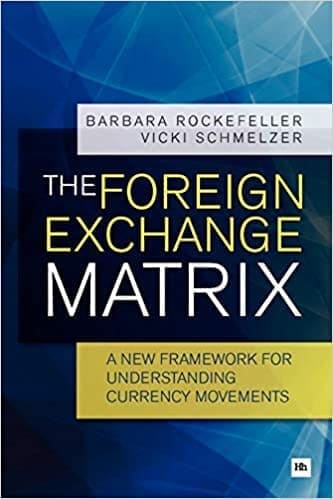

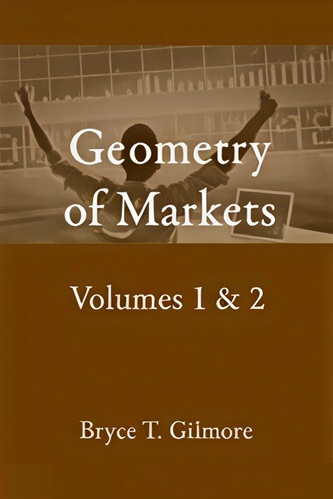
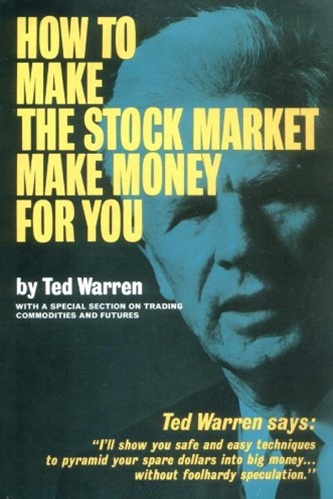
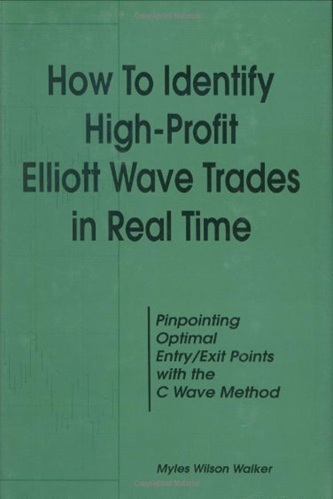
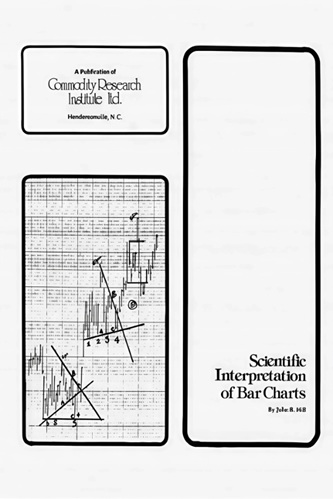

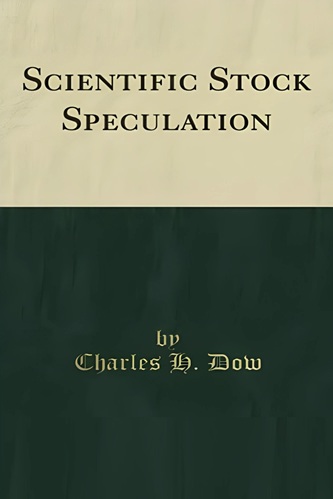
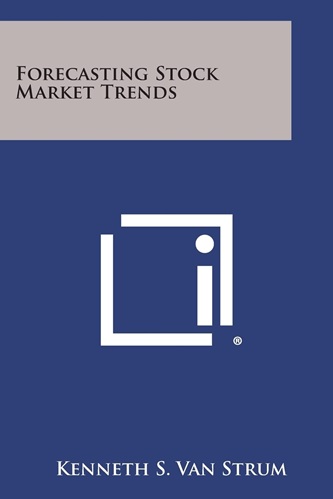
Brylee Barrett (verified owner) –
It misses one star because it is dated. A lot has happened in the last few years. The authors might consider an update, as it is written so well.
Andre Pruitt (verified owner) –
One of the best books on FX that I have read. Gives you a holistic view of the FX market, major player and key drivers. But most importantly, it describes the market, as is and not based on some theoretically balanced or ideologically pure standpoint.
Highly recommend and eagerly await a second edition, covering brexit and limitations of MMT to explain some of the current trends/non-trends consuming the markets over the last 24 months.
Jeffrey Park (verified owner) –
Barbara Rockefeller and Vicki Schmelze show a precise and holistic view about Forex. Great book, but it’s not for novice!
Blakely Clayton (verified owner) –
I knew this book would be good and I was right. The authors definitively explain the mechanics of the foreign exchange markets and confirmed my view that the field of economics has failed to provide a definitive formula for explaining exchange rate movements. This book will open your eyes and teach you a new way to think about the markets. If you are as fascinated by price movement as I am – you will find this book to be an invaluable tool in your armoury of weaponry for understanding and profiting from exchange rate price movements. Fabulous book – written by people who know what they’re talking about. I would more than highly recommend this book to anyone who finds the subject of currency markets fascinating. this book will enrich your understanding and make you more comfortable with regard to taking risks in the markets. I love it so much – it sleeps next to me. Thank you Barbara and Vicky – you have made my world a better place.
Alayah Love (verified owner) –
I’m a foreign exchange professional with over 20 years’ experience in the business. I’ve worked for years on trading floors in some of the biggest FX houses. Yet even I found this well-researched and up-to-date book to be filled with new insights into the market I’ve spent my career following. The Foreign Exchange Matrix combines the academic research into theories of how exchange rates are determined with the authors’ knowledge of how traders sitting at their screens actually make decisions and determine the market. It brings theory down to earth by grounding it in the authors’ considerable experience with how things work in practice, as well as how they should work in theory. The Mundell-Fleming theory is all very well and good, but when the non-farm payrolls come out, people have one nanosecond to decide: do I buy or do I sell? It’s this intersection between the inescapable long-term trends in the FX market caused by economic forces and the day-to-day noise of people buying and selling that’s difficult to understand yet essential for people who want to trade in this market. “The salient question in FX analysis is in fact: how do traders rank various multiple variables and events to determine whether they want to buy or sell a currency?” That’s the kind of question you’ll find raised – and answered – in this important book. I’ve recommended it to countless colleagues and clients who’ve learned the basic “whats” of the FX market and now want to start understanding the deeper “whys.” People who are looking for something beyond the introductory level to understand how the FX market really works.
One of the key benefits of this book is that it encompasses and explains the many changes that have taken place since the 2008 financial crash. That cataclysmic event changed many of the behavioural patterns of FX traders and therefore changed the way that currencies trade. These changes are dealt with and explained in this book, making it essential reading for anyone who wants to understand how the market is trading today. As an added benefit, it’s written in a clear and jargon-free style, as befits two such accomplished writers. Highly recommended.
Jericho Dixon (verified owner) –
Thoughtful readers finally have a book that describes clearly where foreign exchange fits in the financial universe, how it is priced, and why it is so difficult to forecast its prices. The authors weave the economics of exchange rate determination; the disparate, at times contrary actions political, monetary and fiscal institutions can take, and how the behavior of FX traders influences exchange rates.
Many FX books to date have noted that FX really is different from other financial instruments, but few have shown why so clearly. Most have also failed to describe how the complex (matrix) character of this collective market defeats successful applications of the universal concept of supply, demand and sentiment that is used to forecast prices in other markets.
The central notion of The Foreign Exchange Matrix is accessible enough. FX markets are affected by more sets of conditions than other markets. Changing economies, central bank policies, market conditions as well as changing sentiment and FX traders’ behavior affect each currency, added to which each currency is affected by its changing relationship to many other currencies as well.
The authors admit they don’t know how to pick which specific set of conditions in this matrix that determines a currency’s value, nor when. The authors’ also explains why without a clear understanding and acceptance of technical analysis that is anathema to fundamental analysts it will be impossible to even begin to understand how FX markets function.
This book offers a solid understanding of how to evaluate what we read and hear about FX. The book’s observations should be read, marked, learned and inwardly digested by anyone who is affected by FX, which, given ever-growing global interdependence means all of us.
With some 50 years of collective foreign exchange experience, the authors offer us a broad framework for understanding an extremely complex market. The Foreign Exchange Matrix is sensible, free of ideology and well worth buying and reading most carefully. – Desmond MacRae
Readers of this review should note that I am the Chief Research Analyst for Rockefeller Treasury Services owned and operated by Barbara Rockefeller one of this book’s authors with whom I have been associated for some 16 years. I did not contribute any research to the writing of this book. Please also note that I am hired on an ad hoc basis; that my compensation is minimal; and that I have always tried to be as constructively critical as possible whenever I have been hired during long association with RTS. Despite this connection, I hope that anyone who chooses to read this book will agree that the praise I have given it is fully justified.
Angelo Melton (verified owner) –
A well written book enjoyed reading.
Would rate as a read if are looking to learn aspects about what FX market is.
Kairo Hanson (verified owner) –
As a person indirectly involved in foreign exchange, it is really useful to understand better how full time professionals in the business think.
Mariana Barrera (verified owner) –
Considering the size and scale of global foreign exchange (FX) markets, the importance of currency valuations to trade and investment, and the impact of wide swings in valuations on daily economic life for billions of people, any book that can provide a coherent means of understanding it all has value. Along these lines, Barbara Rockefeller and Vicki Schmelzer’s The Foreign Exchange Matrix: A New Framework for Understanding Currency Movements is well worth the read.Rockefeller is an international economist and a forecaster specializing in foreign exchange, while Schmelzer is a veteran in the foreign exchange field, currently being a senior financial journalist at Market News International.
Put together in a compact 276 pages, Rockefeller and Schmelzer write in a clear, straightforward style that provides a solid context as to the hows and whys of the foreign currency markets. Before plunging into their matrix concept, the authors set the stage by noting that FX market is driven more by pure speculation and global investment flows than by economic ideas and facts; FX players “thumb their noses at the efficient market hypothesis and the concept of rational expectations; FX has a disconnect puzzle in which factors that should move the market do not (such as the three decades of persistent trade surpluses in Japan and deficits in the U.S.); and FX does not have a benchmark rate of return that traders and investors must try to match and surpass”. They also believe that FX traders are vastly more disciplined than traders in other sectors, partially because they use technical analysis (that point can be disputed).
How then to deal with this uniquely different market? Rockefeller and Schmelzer use what they refer to as the FX Matrix, which is “a grid format of multiple factors and players in the FX market and the way they interact”. Central to this is random matrix theory. The authors note, “”random matrix theory is borrowed from physics and used to do things like remove idiosyncratic noise from correlation studies in designing optimum portfolios, leading to better estimates of component risk.” Simply stated, the matrix carefully analyzes and weights a wide range of factors and their variables to ultimately produce an idea of currency direction. Matrix theory is something used by central bankers, hedge funds, carry traders, multinational corporations and a host of others.
The book has 12 chapters, which start by identifying the key issues and work through such issues as interest rates, forecasting, positions and flows, and technical analysis. Considering the global economic volatility that has rocked markets since 2008, perhaps the most interesting chapter is about the euro. A tightly written chapter, Rockefeller and Schmelzer provide an excellent discussion as to the euro’s evolution as a reserve currency and how the European sovereign debt crisis has impacted it. They note that the European Monetary Union (EMU) has devised a new “gold standard” of sovereign financial governance – monetary and fiscal excellence. Along these lines, one of the more astute observations is as follows: “It seems implausible that a new reserve currency can be born out of a single principle – control of inflation and public debt to specific levels – without all of the features and benefits of a reserve currency, especially a rockhard unwillingness to default on sovereign debt. And yet the EMU is permitting default while getting the rest of the world to name it something else and the rest of the world is willing to buy into the fiction because it is so enchanted with the new gold standard.” The authors are hopeful about the euro’s future, in that it “may well arrive at reserve currency status one day, just later than the founders wanted and foresaw.”
The Foreign Exchange Matrix has a lot to offer for those intrigued by the global FX market. It is not for those looking for easy beach reading (unless you are a professor of finance). We strongly recommend Rockefeller and Schmelzer’s book, especially for people interested in investing in the FX market and for business students, both at undergraduate and graduate levels.
Makai Blair (verified owner) –
This book is not recommended for people who are trying to learn about Fx trading. The book is overloaded with information and theories. Unless you are trying to feed your head with international economics, this book is not good for trading education.
Whitley Garrett (verified owner) –
I believe George Soros is going to like this book! His theory of “reflexivity”, which is his own take on the “madness of crowds” view of the market, keeps coming up as one of the primary investment approaches you need to win at – or at least understand – how the currency markets work.
The authors, Barbara Rockefeller and Vicki Schmelzer, clearly explain using dramatic examples that prove Soros’ reflexivity proposition — where Soros believes that the biases of the big market participants, such as hedge funds and Sovereign Wealth Funds, often enter into how they value the Euro or the US dollar, which in turn radically shifts the price of these instruments. The traditional ways of looking at economic fundamentals, in particular the “efficient market theory”, gets run over and left at the side of the road by the biases of the big players.
The authors also adapt a concept called “matrix” theory, which, as they explain in the first chapter, is a form of sophisticated analysis that Ben Bernanke at the FED employs when trying to assess levels of country risk in the world’s financial system. They use their matrix model to try and determine how the big market players like the central bankers, hedge funds, Sovereign Wealth Funds, the big interbank traders, carry traders, multinational corporations, large mutual and pension funds and ETFs, as well as retail investors, and high frequency traders, all tend to act differently to all the different types of fundamental news, the perceptions and expectations about news worthy events, as well as to important indicators in technical analysis.
One of the most interesting relationships that they refer to is how the currency traders at the largest banks, who are essentially the brokers for some of the largest hedge funds and Sovereign Wealth Funds, also often invest large speculative or proprietary accounts for the banks they work for. These big traders in turn clearly get to see how the large hedge funds and Sovereign Wealth Funds are trading before anyone else does. And obviously they sometimes act on this privileged information. Is this illegal? No it is not. The authors point out that Congress has not passed any legislation to prevent this kind of “front running”.
So, given that the biggest bank traders clearly have an edge in playing the game, if we ourselves wish to profit from this kind of market behavior, (“when in Rome”, do as the big bank traders do) then it makes sense to try and think like the big hedge funds, the Sovereign Wealth Funds, and the big bank traders. Do these large traders use fundamental analysis, technical analysis, or the George Soros theory of reflexivity?
Rockefeller and Schmelzer point out that the big players are much more likely to use technical analysis in making their trading decisions rather than traditional economic fundamental analysis. And the authors also show that the Soros theory of reflexivity is extremely important. And in my opinion, if we as investors can understand what particular bias or market perception that the big players are using at a particular time, than, in addition to using basic technical analysis, then we ourselves would have an edge as well. All we really need then is a good crystal ball.
The authors also do a superb job of explaining risk appetite and risk aversion, and they think that the concept of risk is of exceptional importance in understanding the currency markets as a whole. They explain this concept with a multitude of examples throughout. The biggest players most definitely react to the shifts in market sentiment concerning risk more than any other factor.
This is a thinking person’s book, and I believe it deserves the full 5-star rating. Although it is not always easy reading, given the complexity of the currency markets, happily both Barbara Rockefeller and Vicki Schmelzer are both excellent writers. They “add a spoonful of sugar (to make) the medicine go down.”
It’s a good book.
Davion Weber (verified owner) –
A great help in understanding forex movements.
Kamiyah Parra (verified owner) –
quality product at fair price
Lia Mayo (verified owner) –
I have been trading fx extensively for over a year. I found this book to be lucid and deep in its coverage. The authors clearly have many years of full-time hands-on experience trading fx, and they openly share it. They do not promise a magical system; they are up front mentioning situations where analyzing markets cannot be 100% complete. Nonetheless, this book taught me how to think about currencies (short- and long-term) in ways where analysis does work and I *can* realize an edge. Even a small edge is enough, and this helped my P/L significantly. My only complaint is that the first few chapters gave a neat explanation of the matrix and how to develop it, but then as they explained numerous techniques through the rest of the book, they didn’t always show exactly where those plug into the matrix.